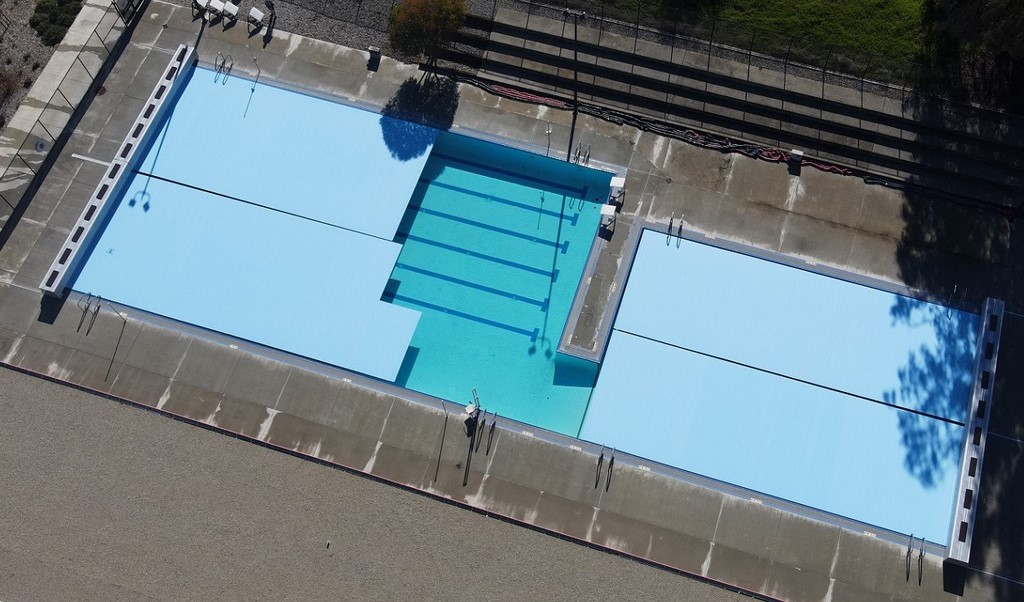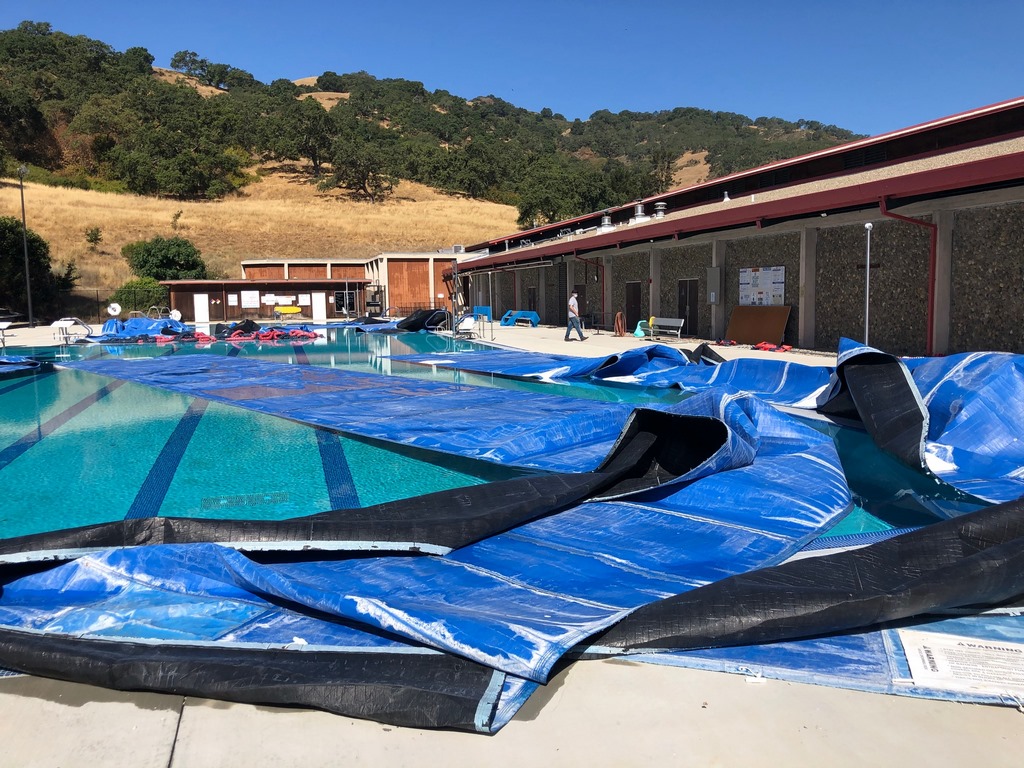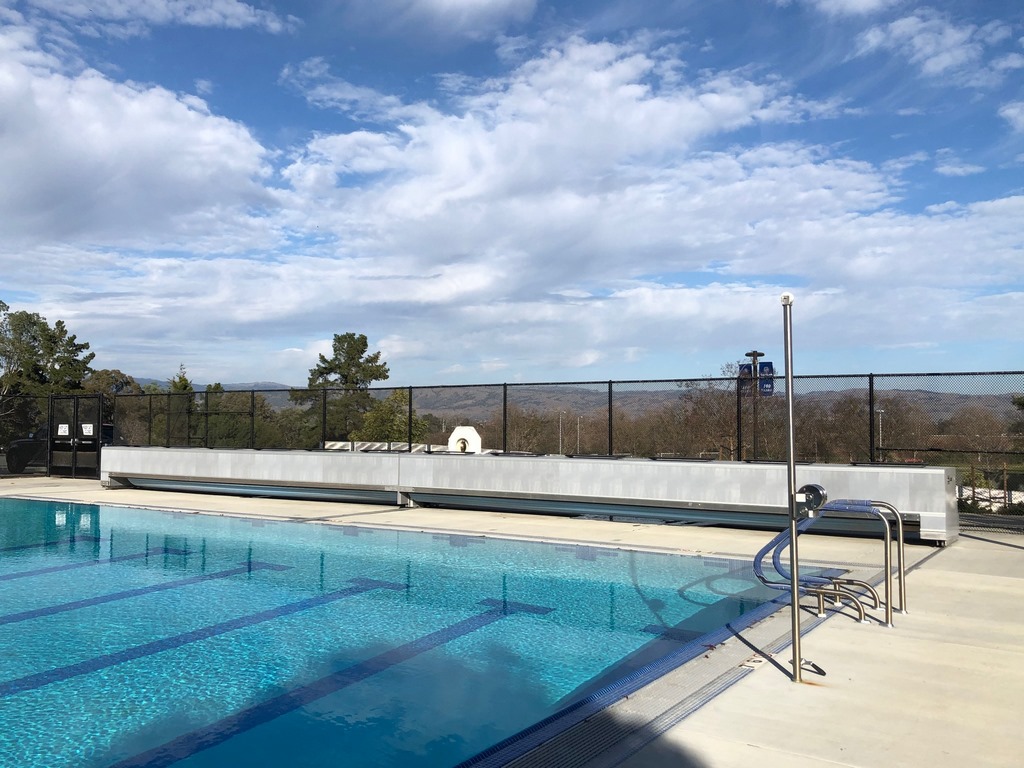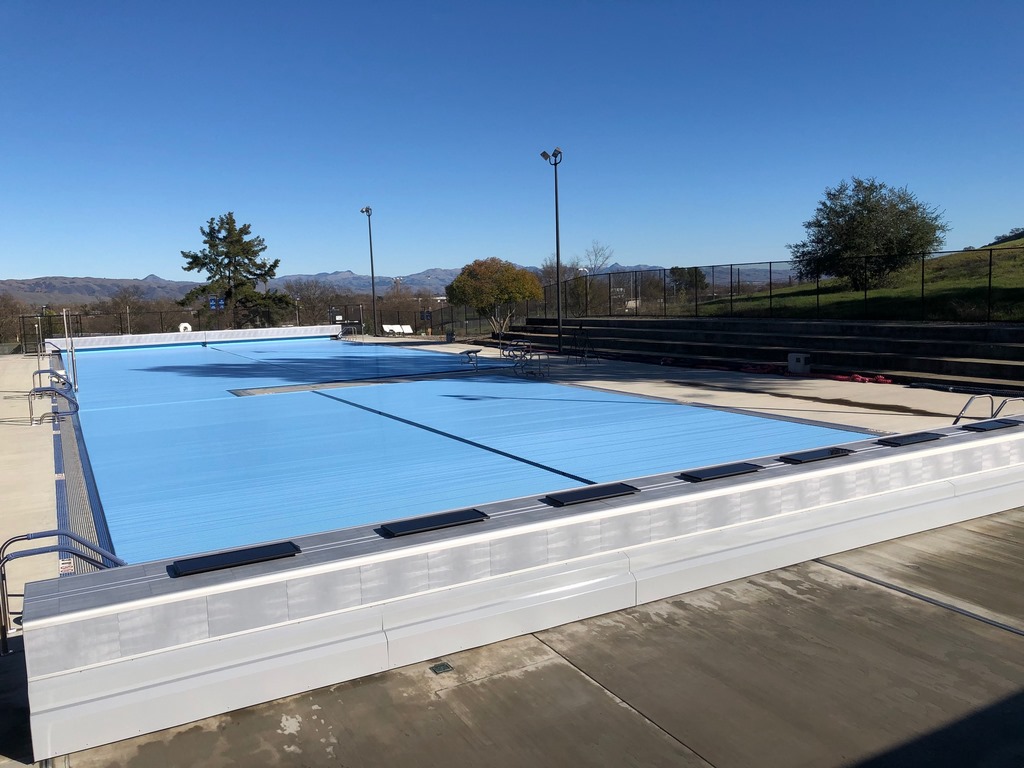The Big Cover Story

Deploying its slat-based automatic cover, Aquamatic Cover Systems recently completed work on a massive existing pool on a college campus where administrators were looking for a state-of-the-art way to conserve both water and energy, all with the touch of a button.
By Tom Dankel
It’s exciting when you have the opportunity to do something that’s never been done before. That was the situation on this project, which we believe might be the world’s largest automatic pool cover – at least it’s the biggest we’ve ever done or seen.
The facility is located at Gavilan Community College here in Gilroy, Calif. It consists of four covers on an large multi-use pool designed to accommodate both competition and various recreational, therapeutic and instructional programs.
One of the administrators called my son, Taylor Dankel, who handles sales in Northern California explaining that they were ready to invest in the savings and convenience of an automatic pool cover system. It sounded like an interesting opportunity to do something on a large scale with added benefit of being just a few miles away.
We visited the college and discovered that the staff had been using thermal insulating blankets on the surface of the pool, which had been somewhat effective in reducing evaporation, but were extremely impractical. They were experiencing major issues with high winds blowing the blankets off the water and basically wading up on the deck. At one point, one of the staff was pulled into the pool while trying to remove one of the blankets, but fortunately was not injured.

Like many clients, both residential and commercial, the folks at the college have been understandably concerned with saving both energy and water. They knew that reducing evaporation is the number-one way to save energy used to heat the water and like many people in this part of the country, they have been impacted by extended periods, which has dramatically increased the cost of water.
FIRST & LAST
Because water has become expensive along with the cost of heating and chemically treating it, the college staff had come to realize that by investing in a system of automatic pool covers, the long-term ROI would far exceed the installation cost — and they could run the entire thing with the push of a button.
Going in we knew this would be a highly customized and challenging design, we presented it to our resident engineer, company founder, Harry Last. As one of the early pioneers in the world of automatic swimming pool covers, he holds multiple patents, and was the inventor our hydraulically powered cover-drive system, a product feature that we believe sets our company apart from other manufacturers. (A long-time family enterprise, along with Taylor, three other grandsons are active in the company.)
He first developed a pool cover in the late 70s to control humidity coming from his home’s indoor pool. At the time he was working on his MBA and ended up writing his thesis on a market analysis of an automatic swimming pool cover. As the saying goes, the rest is history.
He founded the company in 1978 and has stayed involved ever since. Suffice it to say, that when it comes to figuring out creative solutions to unusual installations, Last is the first guy you want on your team.
OVER THE TOP
Back at the Gavilan campus, the big design challenge was due to both the pools’ size and unusual footprint: On one side, there’s a 95-foot section with lane markers and starting blocks, which functions as a 25-meter competition pool. That’s separated from a 65-foot recreational section by an unusual partial 10-foot-wide peninsula that extends about half the 60-foot width of the pool.
The problem: there was no practical way to install vaults or work around the peninsula, plus the pool was too wide for our maximum-width cover, which is 39 feet due to manufacturing and shipping constraints.
That all meant that we’d be going with a combination of our slatted Hydralux covers, which can work around irregular shapes. The price of the cover itself is straightforward, based on our cost per square footage, which remains the same, whether it’s a simple project or a complicated one like this. The Gavilan project checks in at 8,535 total square feet, which as stated above we believe is a record for an automatic pool cover.
(If someone else comes forward with a bigger example, we look forward to seeing it and offer our congratulations ahead of time!)
Designing systems, especially on retrofits, can turn tricky when you start developing the enclosure, track system and needed infrastructure, especially when trying to adapt it all to an existing vessel. The length of the cover, for example, dictates the roll-up size, which in turn determines the size of the enclosure. Because the enclosures need to be rigid and free of any deflection, we design them with cross beam sections, based on the size of the span.
In this case, the four covers are housed and deployed from movable, solar-powered “benches” that roll back automatically as much as 10 feet from the edge of the pool when not in use. Because the systems require no length of pool tracks or permanently installed vaults, or AC power connections, it was the right set of solutions for adding multiple covers to an irregularly shaped and exceptionally large multi-use pool.
We installed the two covers over the competition side of the pool first. It worked great as separate systems, but then Last had an idea that we could combine the two covers on the right side and have them function as a single mechanism.
He developed hardware to create and connect multiple drives of the covers, with a single control and drive system, enabling two separate covers traveling at the precise same time and speed, and with all the necessary structural rigidity to ensure there is minimal deflection across the overall width of the covers. The “bench” in this installation is over 50 ft. long.
It all worked perfectly. Yes, we do believe it is the biggest automatic pool cover project in the world, but whether that holds, we will always be proud of this outsized cover achievement.
Tom Dankel is vice president of Aquamatic Cover Systems, an automatic pool-cover manufacturer based in Gilroy, Calif. He has been with the company for 36 years.











